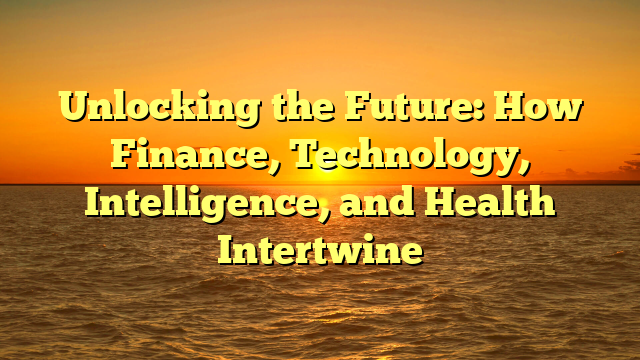In slot demo evolving world, four critical pillars stand out: finance, technology, intelligence, and health. These divergent fields are now deeply intertwined, redefining the way we live, work, and thrive.
—
1. The Digital Revolution in Finance
Finance has undergone a radical shift thanks to digital breakthroughs. From mobile banking, blockchain, to robo-advisors, the old rules of money are being rewritten.
Cryptocurrency is perhaps the most groundbreaking innovation in recent years. This technology enables secure, transparent, and decentralized transactions without the need for intermediaries.
Likewise, AI-powered investment tools are replacing human judgment. Platforms like eToro use algorithms to manage portfolios based on market conditions and risk profiles.
Spintax:
People can now invest
with just a few taps on their smartphones
without needing traditional brokers.
—
Tech-Driven Health Innovations
Healthcare has embraced technology like never before. From telemedicine to wearable devices, patients are empowered to monitor their health in real time.
AI in healthcare plays a key role in diagnosing diseases, assessing risks, and even performing robotic surgeries with remarkable precision.
Wearable tech are becoming ubiquitous, tracking:
Heart rate
O2 saturation
Circadian rhythms
Physical activity
These devices help users stay motivated about their personal health goals.
Spintax:
Telemedicine apps
enable real-time consultations
regardless of geographical boundaries.
—
3. Intelligence: The Human and Artificial Blend
Cognition is no longer just about IQ. In the era of AI, both human intelligence and artificial intelligence (AI) are critical assets.
Emotional Intelligence (EQ) has gained attention in leadership and business. Leaders who manage emotions well often outperform those who rely solely on logic.
On the tech side, machine learning algorithms are capable of learning from data, enabling systems to:
Detect anomalies
Make predictions
Automate complex tasks
Spintax:
The integration of AI in workplaces
boosted efficiency
but also sparked debates about employment.
—
Financial Health and Physical Wellness
There’s a growing awareness that health and wealth are deeply connected. Financial stress is linked to mental health issues, while poor health often leads to increased expenses.
Health insurance platforms now offer:
Flexible payment options
Wellness rewards programs
Transparent pricing tools
Meanwhile, employers are investing in corporate wellness programs, acknowledging that healthy employees lead to higher performance and lower absenteeism.
Spintax:
To saving for gym memberships
financial decisions directly impact physical health.
—
Connected Devices, Smarter Lives
Smart devices are no longer science fiction. The Internet of Things (IoT) connects:
Appliances
Health monitors
Financial trackers
These devices communicate with each other, offering insights across domains.
Imagine a smartwatch that tracks your health, sends updates to your doctor, and adjusts your health insurance premiums in real-time based on your activity. This is no longer hypothetical—it’s happening.
Spintax:
Connected systems
help users make smarter choices
in finance, health, and life management.
—
Finance, Health & Intelligence in 2030
As we look ahead, these four sectors will become even more integrated. Finance will rely more on AI and data analytics, healthcare will shift further toward precision medicine, and human intelligence will be augmented by neurotechnology and cognitive enhancement tools.
Spintax:
Staying informed
will be the key to thriving
in this fast-evolving ecosystem.
—
Conclusion
Finance, technology, intelligence, and health are no longer siloed fields. Their fusion is reshaping society.
To thrive, one must adapt to their synergy. This new era demands a holistic mindset, fueled by knowledge, adaptability, and vision.
Unlocking the Future: How Finance, Technology, Intelligence, and Health Intertwine

